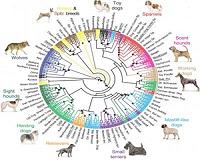| . |  |
. |
Ithaca NY (SPX) Mar 29, 2010 Forget top-to-bottom only. New Cornell University evolutionary biology research shows how plants at the bottom of the food chain have evolved mechanisms that influence ecosystem dynamics as well. "The ecology and interactions of most organisms is dictated by their evolutionary history," said Anurag Agrawal, associate professor of ecology and evolutionary biology (EEB), the study's senior author. In food webs, predators help suppress populations of prey by eating them; that frees species lower in the food chain, such as plants, to flourish, a dynamic called a "trophic cascade." Most trophic cascade studies have focused on the ability of predators to increase plant biomass by eating herbivores. Such studies typically find strong trophic cascades in aquatic environments, where big fish eat minnows, which eat the tiny algae-eating crustaceans called daphnia. Agrawal, first author Kailen Mooney, who is a former Cornell postdoctoral researcher and now assistant professor at the University of California-Irvine, and colleagues studied trophic cascades in 16 milkweed species, famed for their interactions with monarch butterflies, and also fed upon by aphids. Plants have evolved three main strategies for increasing their biomass as much as they can against the forces that limit their growth, said the researchers: They grow as quickly as possible; develop direct defenses, such as toxins or prickly leaves, against herbivores; and attract such predators as ladybugs that eat their pests. But plants do not have the resources to develop all three defenses. Since Darwin, evolutionary biologists have hypothesized that over millions of years of evolution, plant species are subject to trade-offs, developing some defense strategies in lieu of others; a key finding of the new study is that these evolutionary trade-offs drive how modern ecosystems are structured. In the case of milkweed, some favored fast growth and the ability to attract predators while putting less energy into resisting herbivores. The study found that one of the major factors leading to greater milkweed biomass (or growth) is the production of volatile compounds called sesquiterpenes, which attract such predators as aphid-eating ladybugs. But surprisingly, the plants' biomass increases regardless of whether ladybugs or other aphid predators are present. The reason, the researchers suggest, is because the trait to produce sesquiterpenes appears genetically linked to faster growth; the strategy here is to replace leaves faster than they can be eaten. At the same time, milkweed species that put more energy into growing faster put less energy into resisting such pests as aphids. "Because no species can do everything, milkweeds that grow fast necessarily have lower resistance to aphids," said Agrawal. "Thus species that grow fast benefit the most from predators" of aphids. The findings have implications for agriculture, as conventional strategies for controlling pests often involve spraying insecticides, said Agrawal. "By including the evolutionary history in our understanding of natural pest management, we gain insight into plant strategies that have stood the test of time, and this may provide hints for breeding crops with traits that ensure robust lines of defense," he added.
Share This Article With Planet Earth
Related Links Cornell University Darwin Today At TerraDaily.com
 DNA Points To Middle East For Emergence Of Dogs
DNA Points To Middle East For Emergence Of DogsLondon UK (SPX) Mar 26, 2010 Dogs likely originated in the Middle East, not Asia or Europe, according to a new genetic analysis by an international team of scientists led by UCLA biologists. The research, funded by the National Science Foundation and the Searle Scholars Program, appears March 17 in the advance online edition of the journal Nature. "Dogs seem to share more genetic similarity with Middle Eastern gray wo ... read more |
|
| The content herein, unless otherwise known to be public domain, are Copyright 1995-2010 - SpaceDaily. AFP and UPI Wire Stories are copyright Agence France-Presse and United Press International. ESA Portal Reports are copyright European Space Agency. All NASA sourced material is public domain. Additional copyrights may apply in whole or part to other bona fide parties. Advertising does not imply endorsement,agreement or approval of any opinions, statements or information provided by SpaceDaily on any Web page published or hosted by SpaceDaily. Privacy Statement |